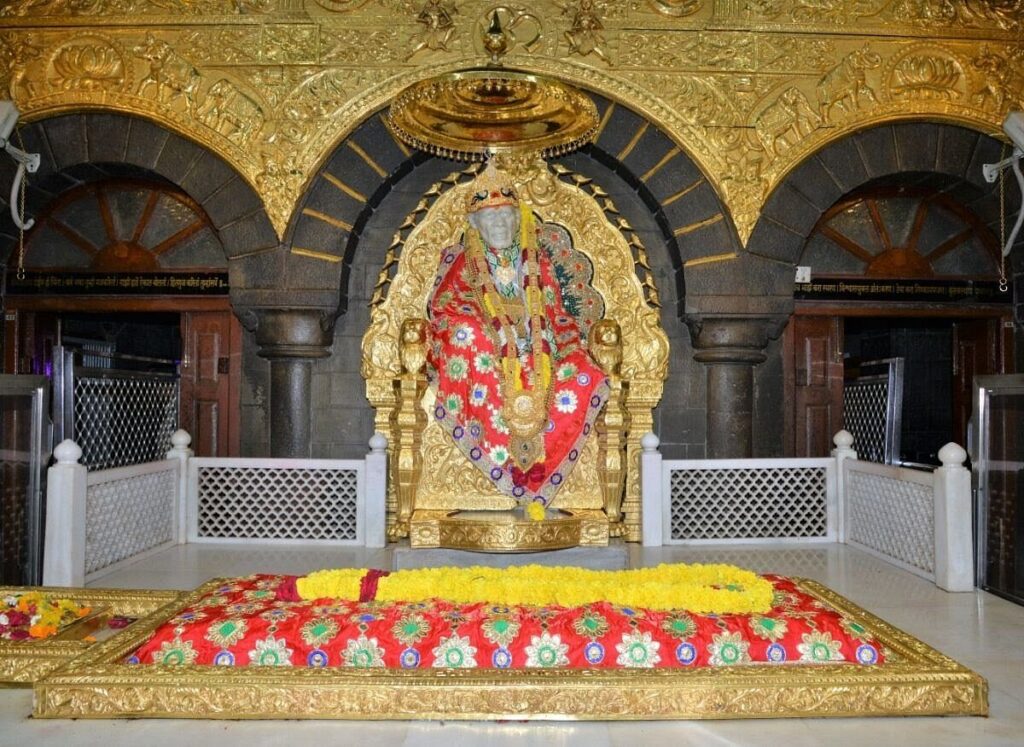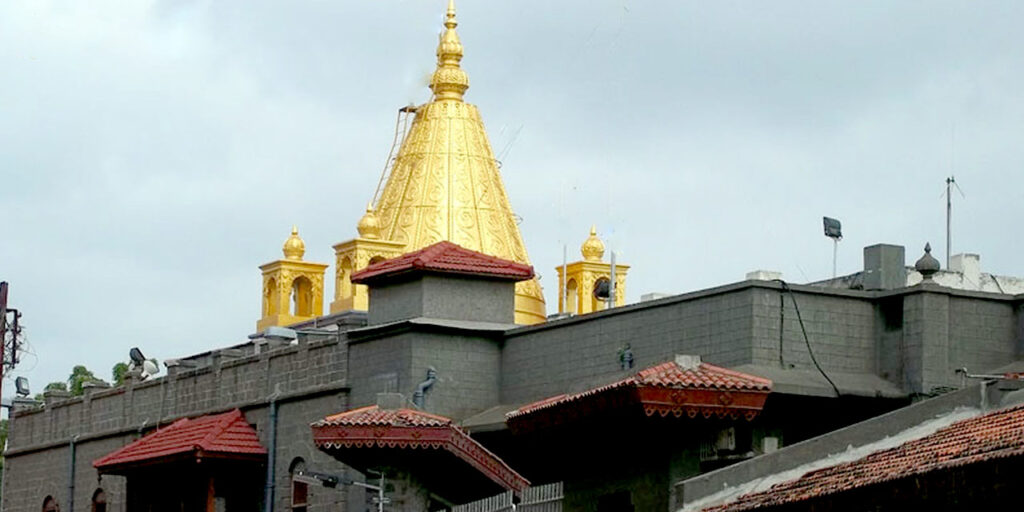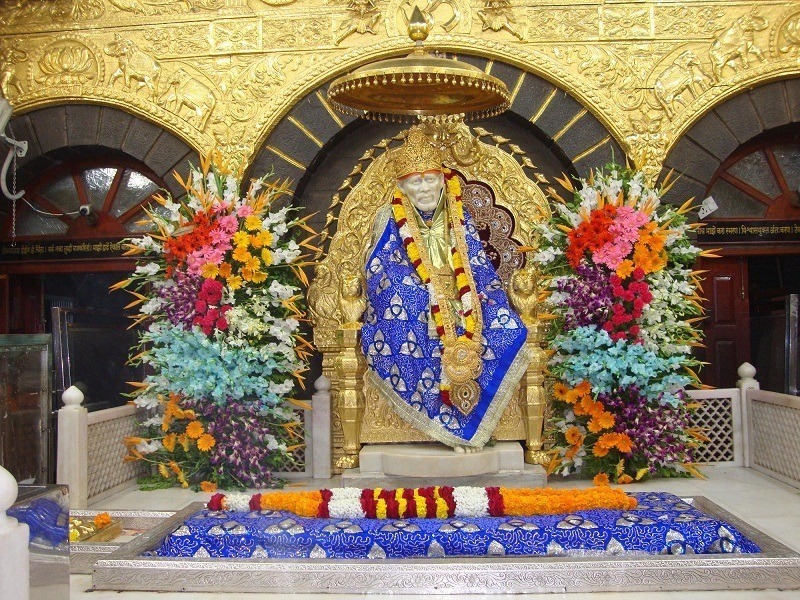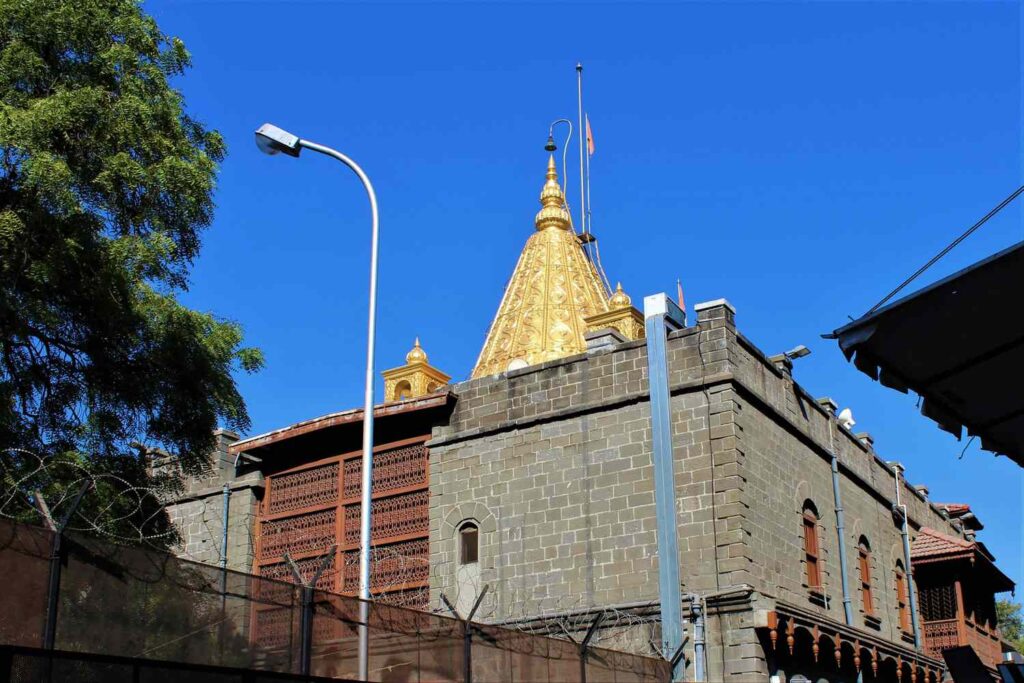
Sai Baba Mandir Shirdi
Shirdi is a small village in Koregaon taluka in Ahmednagar district of Maharashtra State located approximately 262 km from Mumbai.The temple is built by a beautiful shrine and there is a Samadhi of Shri Sai Baba. Sai baba was a saint and master of Indian Spiritual Gurus.
Namaste 🙏 नमस्ते
Secure your visit • अपनी यात्रा सुरक्षित करें
Historical background and Architectural splendor
Shirdi city is known as the home of the 19th century of Saint Shri Sai baba. People refer to Shirdi as Sainagar. A 16 year old boy engrossed in deep meditation under a Neem Tree. This is the origin of Sai Baba. Thursday is the day Shri Saibaba is Specially Worshiped.
Shirdi Sai baba mandir was built over the samadhi of Shri Sai Baba in 1922. The purpose was to build a Wada for resting place in Shirdi. The Samadhi Mandir is built on the same land where Sai Baba used to tend a garden.

Religious Significance
Shirdi Sai Baba Mandir is India's extensive cultural and spiritual heritage and well-known pilgrimage destination in the Indian state of Maharashtra.Sai Baba was an Indian Spiritual Master considered to be a Saint and Fakir revered by both religion devotees Hindu and Muslim.The Guru Sai Baba is thought to have been born in the 1838s in the village of Pathri Maharashtra.The temple has a wide-ranging impact on Indian Society, affecting aspects of its economy, society, culture and religion.

Festival and Celebrations
Here festivals celebrated are Ram Navami, Guru Pornima, Vijayadashami, Makar Sankranti, Dasara.The festivals are celebrated with great enthusiasm and the town comes alive with lights, colors and music.

Surroundings area & attractions
- Shani Shingnapur Temple
- Gurusthan
- Trimbakeshwar
- DwarkaMai
- Khandoba Mandir
- Sai Heritage Village: Time 9 am to 11pm, Entry fees Rs.150 per adult and free for children below 5 years.
Visitor information
Timings :
- 6 am to 9.30 pm
Best time to visit Shirdi
October to March
Peak season
October to February & May to June
Notable Events and Incidents
- Construction and Establishment: 1922
- Sai Baba's Mahasamadhi:October 15, 1918
- Digital Initiatives had been taken.
- Global Pilgrimage
Connectivity :
- By Train – Shirdi is 196 km away from Pune and it takes time to 6 hr15 min.
- By Bus – Pune to Shirdi 4 hr 43 min.
- By Air - Chhatrapati Shivaji Maharaj International Airport Mumbai to Pune International Airport
FAQ
The Shirdi Sai Baba Mandir is located in the town of Shirdi in the Ahmednagar district of Maharashtra, India.
Sai Baba is a revered spiritual figure who lived in Shirdi during the late 19th and early 20th centuries. He is worshipped as a saint and a manifestation of divine love and compassion. The Shirdi Sai Baba Mandir is dedicated to his worship.
The Shirdi Sai Baba Mandir was established over a century ago at the site where Sai Baba spent much of his life. The temple complex has grown over the years and now includes various structures, including the main shrine, Samadhi Mandir (where Sai Baba’s tomb is located), and other buildings.
The main attractions within the Shirdi Sai Baba Mandir complex include the Samadhi Mandir, Dwarkamai (the mosque where Sai Baba lived), Chavadi (where he used to sleep), Gurusthan (where he was first spotted as a young boy), and the Sai Baba museum.
The Shirdi Sai Baba Mandir follows a daily schedule of rituals and ceremonies, including aarti (worship with lamps) performed multiple times a day, abhishekam (ritual bathing of the deity), and various poojas (ritualistic worship).
While there is no strict dress code, visitors are encouraged to dress modestly and respectfully while visiting the Shirdi Sai Baba Mandir. Revealing clothing and attire that may be considered inappropriate for a place of worship should be avoided.
Yes, devotees have the option to make offerings or donations at the Shirdi Sai Baba Mandir as a gesture of devotion and support for the temple’s activities and maintenance.
The Shirdi Sai Baba Mandir celebrates several festivals throughout the year, including Guru Purnima (commemorating Sai Baba’s teachings), Ram Navami, and his Punyatithi (death anniversary). These festivals attract devotees from far and wide.
Photography is allowed in certain areas of the Shirdi Sai Baba Mandir complex, but there may be restrictions in certain sections or during specific rituals. Visitors are advised to inquire about photography guidelines upon arrival.
The Shirdi Sai Baba Mandir is easily accessible by road from various parts of Maharashtra and neighboring states. Shirdi also has its own railway station, and there are bus services available from major cities like Mumbai and Pune.
Dwarkamai is a sacred mosque located within the Shirdi Sai Baba Mandir complex. It was a place where Sai Baba spent a significant amount of time and performed miracles. Devotees believe that visiting Dwarkamai and seeking Sai Baba’s blessings can fulfill their wishes and alleviate suffering.
Yes, Shirdi offers several other places of interest for visitors, including the Shri Sai Baba Sansthan Trust Museum, Sai Teerth Theme Park, and the Khandoba Temple. Pilgrims also visit nearby temples and holy sites associated with Sai Baba’s life.
The Shirdi Sai Baba Mandir provides various facilities for devotees and visitors, including accommodation, dining halls serving free meals (prasad), cloakrooms, medical facilities, and transportation services within the temple complex.
